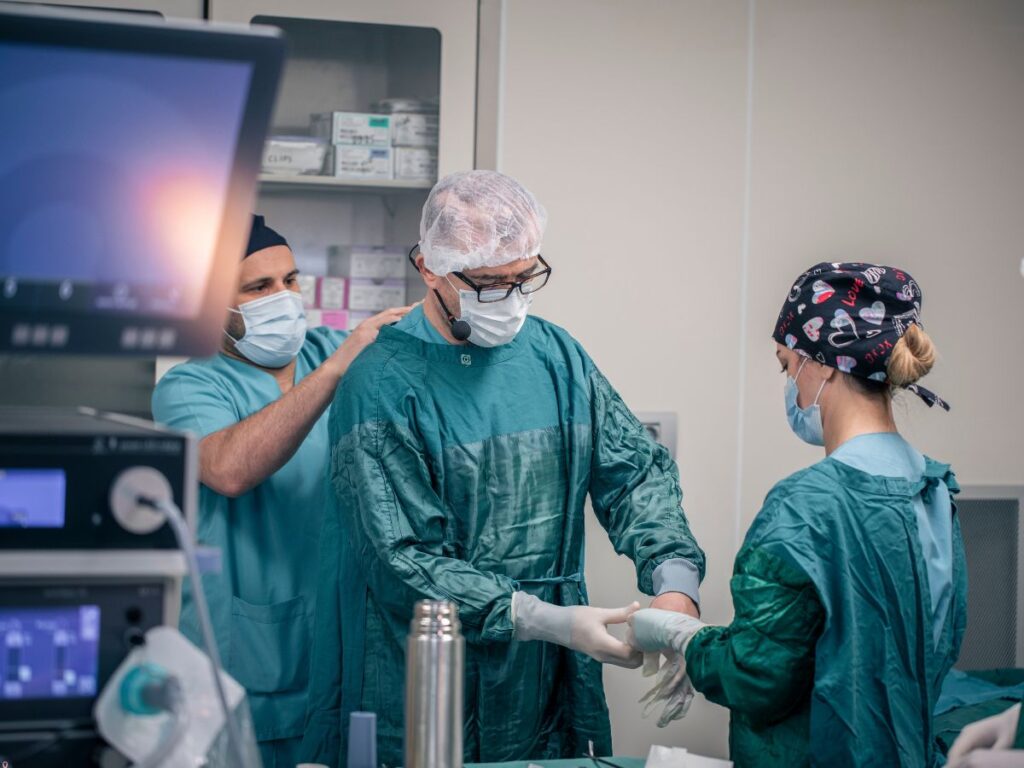Why Prehab Enhances Surgical Outcomes
Many people expect to start therapy only after a joint replacement, yet preparing the body beforehand—known as prehab—can significantly improve post-operative success. Strengthening muscles around the knee, hip, or shoulder fosters stability, while targeted flexibility reduces surgical trauma. By working with Dr. Elham and therapists before the procedure, you familiarize yourself with exercises and correct movement patterns that expedite recovery. Prehab primes the tissues for the upcoming stress of surgery, ensuring your new joint can integrate seamlessly. Skipping this stage leaves weakened muscles struggling to rebound, potentially prolonging post-op discomfort and limiting regained motion.
Common Barriers Pre-Surgery
Chronic pain or stiffness might deter you from exercising, causing further deconditioning. Fear of surgery can lead to inactivity, intensifying atrophy around the joint. Poor posture or old compensations risk post-surgical imbalances once the replacement is placed. Prehab counters these influences by systematically engaging the muscles needed for post-op tasks—like walking or standing from a chair. Dr. Elham evaluates alignment, ensuring the spine and pelvis won’t sabotage the replaced joint’s success. By addressing muscle or posture deficits upfront, you set the stage for a smoother, less painful transition when the new implant is in place.
Pillars of Joint Replacement Prehab
Pre-surgical rehab generally involves:
- Muscle Strengthening: Building quadriceps and glute strength for knee or hip surgeries, or rotator cuff stability for shoulder replacements.
- Flexibility Drills: Loosening tight tissues so surgeons can maneuver easily and scarring is minimized post-op.
- Posture and Core Work: A strong trunk supports recovery, preventing undue stress on the new joint.
- Balance and Coordination: Reinforcing neuromuscular control so you adapt faster to the implant.
- Education and Expectation Setting: Learning safe ways to move, handle assistive devices, and plan for the immediate post-op period.
These measures expedite healing, slashing the time you spend relearning basic motions post-surgery and decreasing risk of complications like blood clots or severe swelling.
Dr. Elham’s Role in Prehab
Dr. Elham examines the broader kinetic chain surrounding the joint. If your lumbar spine or pelvis is misaligned, the joint might endure lopsided forces that hamper post-surgery integration. Gentle chiropractic adjustments optimize alignment, ensuring the muscles you strengthen can operate in harmony. He also collaborates with physical therapists on recommended prehab drills—like partial squats for knee replacements, bridging exercises for hips, or scapular retractions for shoulders—tailoring intensity to your comfort. By syncing posture, core stability, and targeted strengthening, Dr. Elham enhances your readiness for surgery day.
Advantages of a Strong Prehab Program
Emphasizing pre-surgical rehab delivers multiple rewards:
- Easier Post-Op Recovery: Familiarity with exercises and better muscle tone accelerate the early post-surgery stages.
- Reduced Risk of Complications: Stronger tissues handle surgical incisions more gracefully, curbing swelling or deep vein thrombosis.
- Less Anxiety: Knowing correct movement patterns and having robust support fosters confidence heading into surgery.
- Better Implant Integration: Balanced musculature ensures the prosthesis endures minimal uneven stress as you regain function.
- Shorter Rehab Duration: Patients typically advance faster once the joint is replaced, shaving weeks off formal therapy timelines.
Over time, these benefits mean you’ll approach surgery strong and prepared, reaping a more comfortable, capable recovery phase.
Maintaining Prehab Gains Through Surgery
Beyond initial sessions, Dr. Elham may advise daily home exercises—like seated leg lifts, light band work, or scapular retractions—depending on the joint to be replaced. Watching posture, especially if you sit extensively, diminishes further atrophy. If swelling or pain flares due to arthritis, gentle ice or short movement breaks keep mobility alive. Arranging your living space for post-op convenience—like clearing walkways or placing frequently used items within easy reach—also extends prehab’s impact. By weaving these strategies into daily life, you arrive at surgery with minimized deficits, so you can bounce back swiftly once the new joint is in place.
Overcoming Pre-Surgery Challenges
Arthritic pain or limited range of motion often dampen motivation to exercise, ironically weakening the joint further. Prehab professionals gradually introduce low-impact tasks, such as gentle biking or water-based exercises, sidestepping heavy strain on arthritic surfaces. Dr. Elham’s manual therapies or spinal adjustments may ease adjacent pains so you can focus on building muscle around the soon-to-be-replaced joint. As strength grows, tasks like short walks or managing daily chores become less taxing, reinforcing your belief in the surgery’s success and your capacity to handle the upcoming recovery tasks.
Risks of Skipping Prehab
Leaping into surgery with weakened muscles and poor flexibility leaves you playing catch-up post-op, grappling with excessive pain or stiffness. Scar tissue forms more aggressively when muscles haven’t been primed for movement, impeding immediate progress. You may rely heavily on narcotics if the body faces both healing from surgery and reconditioning muscles simultaneously. In some cases, inadequate muscle support around the new joint fosters abnormal wear or loosening. By contrast, prehab steadies the foundation, letting you approach the operating table equipped for a more seamless post-surgical return to activity.
A Typical Prehab Session Layout
After an initial assessment—joint range tests, muscle strength checks, alignment reviews—Dr. Elham and the therapy team map out exercises focusing on your deficits. If you’re preparing for a knee replacement, for example, sessions might include quadriceps and hip abductor drills, gentle stretches for hamstrings or calves, and core stabilizing moves. Shoulder candidates may do rotator cuff strengthening or scapular mobilization. Dr. Elham might perform mild chiropractic adjustments if your spine or pelvis hamper correct form. As you progress, workloads rise, ensuring you continuously challenge and strengthen tissues, culminating in a robust pre-surgical state.
Stepping into Surgery, Prepared
Pre-surgical rehab for joint replacement braces your body and mind for the intense changes ahead. By fortifying muscles, refining posture, and honing movement patterns, you reduce immediate post-op hurdles—requiring fewer pain meds, breezing through early PT milestones, and preserving joint alignment around the implant. Dr. Elham’s integrative care cements these gains, addressing adjacent spinal or muscular factors that might sabotage a smooth post-op run. Ultimately, you enter surgery more resilient, with less fear, and set yourself on a trajectory where the new joint can deliver what it promised: freedom from lingering pain and a pathway back to active, fulfilling movement.






